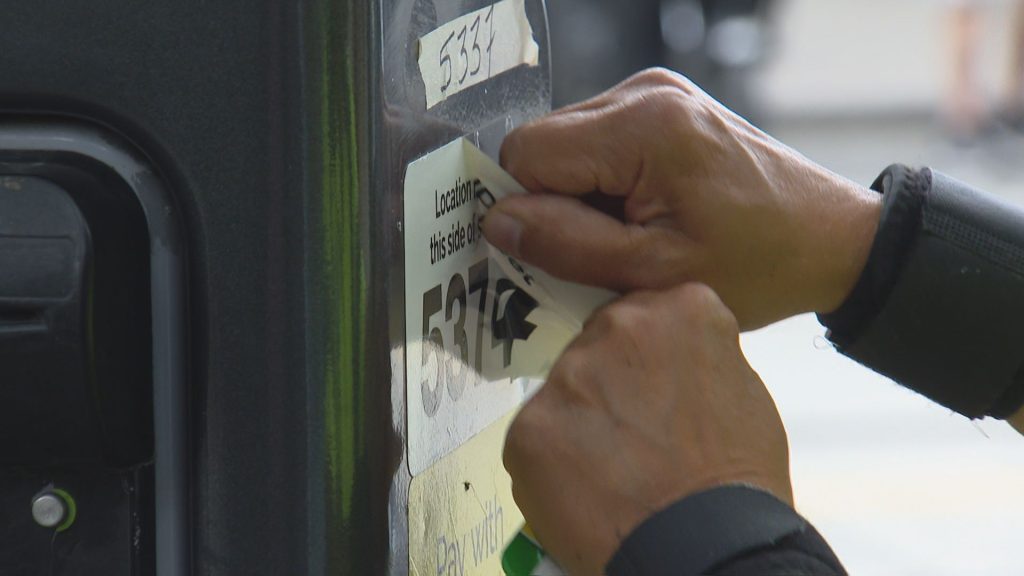Baloney Meter: How credible are the plans of parties to tweak EI premiums?
Posted September 26, 2014 7:30 am.
This article is more than 5 years old.
OTTAWA – “Mr. Harper and his government have announced an annual $225-million measure that is unlikely to produce even one job. The Liberal plan would represent a benefit of up to $1,279.15 for every hire, which for $225 million could produce over 176,000 new jobs.” — Liberal Leader Justin Trudeau, Sept. 15, 2014.
“Mr. Speaker, our plan will work, unlike the Liberal plan. The CFIB has supported the plan, because it understands that it will create 25,000 new jobs. It will alleviate the tax burden for the great employers in this country, our small businesses.” — Finance Minister Joe Oliver, Sept. 23, 2014.
“Once again, the Liberals are proposing to raid the contributions of workers to give tax cuts to companies. This time it’s for an ill-thought out corporate tax credit that isn’t guaranteed to create any jobs.” — NDP news release, Sept. 23, 2014.
_____
Since Parliament resumed on Sept. 15, the Conservatives, Liberals and New Democrats have been engaged in a furious spin war over their varying plans to spend some of the $3-billion surplus in the employment insurance fund to create jobs.
Economists say all three parties are throwing around dubious numbers and promoting schemes that would have little measurable impact on job creation. They say it would be more effective to simply reduce employers’ EI premiums across the board.
Spoiler Alert: The Canadian Press Baloney Meter is a dispassionate examination of political statements culminating in a ranking of accuracy on a scale of “no baloney” to “full of baloney” (complete methodology below).
This one earns a rating of a “lot of baloney” for all three parties — they’ve been playing fast and loose with the numbers and making claims that can’t be substantiated or which contradict their previous positions.
THE FACTS:
A few days before MPs returned from their summer break, Finance Minister Joe Oliver announced the government would reduce EI premiums paid by small businesses by nearly 15 per cent, saving them $550 million over two years.
The government offered no job creation estimate, but cited the 25,000 jobs estimated by the Canadian Federation of Independent Business.
However, the reduction applies only to employers who pay $15,000 or less in annual premiums, which many economists say could have the perverse effect of discouraging more hiring, or even encouraging firing, as employers try to stay under the eligibility threshold.
Liberal Leader Justin Trudeau proposed using the same amount of money to give a premium holiday only to employers who hire new workers. The initial Liberal news release talked of a reward “for every newly hired worker in 2015-16,” pegged the cost at $225 million annually and boasted that it “could produce over 176,000 new jobs.”
Since then, Liberals have clarified that the premium holiday would apply only to those employers who add net new workers to their payroll, not to those who are simply replacing workers who retire, quit or were fired.
They’ve also clarified it would be a two-year holiday with a “fixed cost” of $550 million, redirected from the government’s plan. And they now say only that it “could help create” up to 176,000 jobs.
NDP Leader Tom Mulcair pounced on the initial Liberal announcement to accuse Trudeau of making a “mathematical mistake of Hudakian proportions” — a reference to Ontario Conservative Leader Tim Hudak’s embarrassing miscalculation of job creation numbers during last spring’s provincial election.
To reward “every new hire” would cost $1.1 billion, the NDP said. Creating 176,000 new jobs would cost $1.5 billion, the NDP asserted, based on a study that found job creation tax credits create one new job for every eight jobs that would have been created anyway.
Even after the Liberals clarified the details, New Democrats doubted it would create jobs and argued that the surplus should be used to expand benefits to jobless Canadians, the majority of whom no longer qualify for EI due to tighter eligibility rules.
The Liberals reminded New Democrats that they proposed a similar premium holiday to “reward the job creators” in their 2011 election platform.
Indeed, the NDP proposal — a one-year rebate on employer contributions to both EI and the Canada Pension Plan for “each new employee hired” plus a $1,000 tax credit bonus for retaining new workers — was 3.5 times more generous than the Liberals’ proposal: a benefit of up to $4,500 per new hire, compared to Trudeau’s $1,279 .
Yet, the NDP pegged the cost of its own proposal at just $625 million annually and claimed it would help create 200,000 new jobs a year.
The Liberals put their proposal to a vote in the House of Commons on Wednesday night. It was defeated by a vote of 239 to 34, with only Liberal MPs supporting it.
THE EXPERTS
The Canadian Press asked three economists with EI expertise to review the flurry of conflicting news releases and statements that have been issued over the past two weeks.
“It’s just absolute baloney,” says University of Ottawa economist David Gray.
“Most economists would take the perspective that if there is a surplus in the EI account … there should just be an across-the-board reduction in the contribution rates. So enough of these tax gimmicks.”
University of Toronto economist Rafael Gomez says economists can barely understand the complexities of the EI program so he finds it “folly and farcical and laughable” for parties to be debating it through tweets and press releases.
Tinkering with EI premiums is “a very weak instrument” to create jobs and fails to understand that the “the true engine of job creation is economic growth.”
To spur growth, Gomez says it would be better to reduce costs for businesses, through things like across-the-board EI premium cuts and infrastructure investments to help them be more productive.
University of British Columbia economist Kevin Milligan says both the Tory and Liberal plans would wind up rewarding employers who would’ve hired new workers without any change to EI premiums. So it’s impossible to guess how many jobs would be a direct result of the premium incentives.
What’s more, Gomez says it’s not possible to measure the impact of EI premium incentives because Statistics Canada no longer has the budget to conduct surveys at the workplace level. Consequently, he says none of the parties’ claims about the number of jobs that will or won’t be created can be believed.
That said, all three economists agree with Trudeau that the Tory plan could actually discourage some employers from hiring additional workers.
“I think the (Liberal) design, without the kink, is better,” says Milligan, who has given non-partisan advice to various parties, including occasionally the Liberals.
“But whether one or the other creates more jobs, I’m not willing to put my neck out on that one.”
Despite its “totally unsubstantiated figures,” Gray says the Liberal approach “does in its essence make more sense than the Conservative approach.”
Both Gray and Gomez applaud the NDP for calling out the Liberals on their initial announcement and forcing them to clarify the details. And to that extent, Gray says the NDP’s missives over the past couple of weeks “are a little closer to the truth” than the other parties.
However, Milligan — whose work is cited by the NDP in claiming the Liberal plan would cost $1.5 billion — says the party has used a literal reading of the initial announcement to make exaggerated assertions about the cost.
“When I look at the kind of numbers that the NDP put on this … when they proposed something similar, it’s in the same ballpark,” he says.
“A version of this is in their own platform, so if this is the craziest policy ever, then it wasn’t too long ago it was their own.”
THE VERDICT
While there’s some truth in Conservative and Liberal claims that their proposals would create jobs, it’s impossible to estimate how many jobs would be directly created. And while the Liberals’ initial announcement deserved criticism, the NDP’s cost claims appear to be exaggerated, ignore subsequent clarifications and contradict the party’s own similar proposal from 2011.
For that reason there is “a lot of baloney” in all three party’s claims.
METHODOLOGY
The Baloney Meter is a project of The Canadian Press that examines the level of accuracy in statements made by politicians. Each claim is researched and assigned a rating based on the following scale:
No baloney — the statement is completely accurate.
A little baloney — the statement is mostly accurate but important details are missing.
Some baloney — the statement is partly accurate but important details are missing.
A lot of baloney — the statement is mostly inaccurate but contains elements of truth.
Full of baloney — The statement is completely inaccurate.
SOURCES








